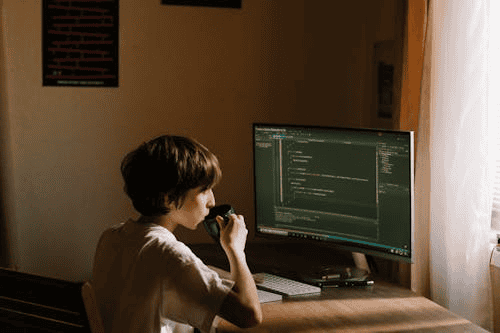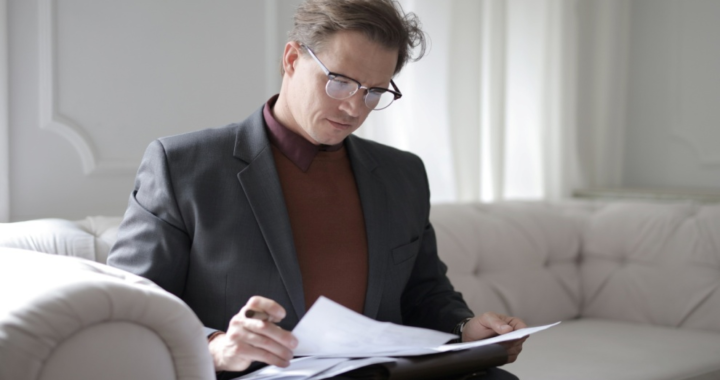The field of computer forensics is rapidly evolving as technology continues to advance at an unprecedented rate. As cyber threats grow more sophisticated, the role of computer forensics in investigating digital crimes and breaches has become more vital than ever.
From advancements in artificial intelligence to the rise of cloud computing, various trends are shaping how professionals conduct forensic investigations. This blog explores the key trends driving the future of computer forensics, providing a comprehensive view of what to expect in this critical area of cybersecurity.
1. Rise of AI and Machine Learning in Forensic Investigations
Artificial intelligence (AI) and machine learning (ML) are revolutionizing computer forensics by enhancing the speed and accuracy of data analysis.
AI-driven algorithms can sift through massive amounts of digital data to identify patterns, anomalies, and potential evidence, which would take humans significantly longer to detect. Machine learning models can also learn from previous cases, improving the ability to detect complex cyberattacks over time.
2. Increased Focus on Cloud Forensics
With the widespread adoption of cloud services, more digital evidence is stored in remote servers than ever before. This shift has created new challenges for forensic experts, as traditional tools aren’t always equipped to handle cloud-based data.
Cloud forensics focuses on acquiring, preserving, and analyzing data from cloud environments while ensuring legal compliance and data integrity. As cloud adoption grows, this trend will continue to gain importance.

3. The Evolution of Mobile Device Forensics
Mobile devices have become an integral part of daily life, making them a crucial source of evidence in investigations. Mobile forensics has evolved to include the extraction and analysis of data from smartphones, tablets, and other portable devices.
Digital forensic experts now need to deal with encrypted messaging apps, mobile payment systems, and social media accounts, making mobile device forensics a complex and ever-changing field.
4. Growth of IoT Forensics
The Internet of Things (IoT) is rapidly expanding, with 18.8 billion connected devices generating and transmitting data. As these devices become more integrated into our lives, they also become potential targets for cyberattacks.
IoT forensics involves analyzing data from smart devices such as cameras, thermostats, and wearable tech to uncover evidence of criminal activity. This emerging area requires new tools and techniques to handle the diverse range of IoT devices and data formats.
5. Encryption and Its Impact on Forensic Analysis
While encryption enhances security and privacy, it also poses significant challenges for forensic investigators. Strong encryption methods, such as those used in secure messaging apps, can make it nearly impossible to access data without encryption keys.
As encryption becomes more widespread, forensic professionals must find innovative ways to bypass or lawfully access encrypted information to retrieve critical evidence.
6. Integration of Blockchain Technology
Blockchain technology is gaining traction across industries, including computer forensics. Blockchain’s immutable ledger system can be used to secure digital evidence and ensure its integrity during forensic investigations.
Additionally, digital forensic experts are beginning to analyze blockchain transactions, particularly in cases involving cryptocurrency, to trace financial movements related to illegal activities.

7. Growth of Forensic Data Automation Tools
As the volume of digital evidence continues to grow, automation tools are becoming essential for digital forensic experts. These tools can automatically collect, sort, and analyze data from various sources, significantly reducing the time and effort required for manual analysis. Automation speeds up investigations and helps prevent human error in the process.
8. Cloud-Based Forensic Solutions
As businesses and organizations shift their operations to the cloud, cloud-based forensic solutions are becoming more prominent.
These solutions allow forensic professionals to access and analyze digital evidence stored in the cloud from anywhere, making it easier to collaborate across teams and jurisdictions. Cloud-based tools also offer scalable storage and computing power, which is crucial for handling large datasets.
9. Emphasis on Real-Time Forensics
Real-time forensics, also known as live forensics, is gaining attention as cybercriminals become more adept at covering their tracks.
Rather than relying solely on post-incident investigations, real-time forensics allows professionals to collect and analyze data as an attack occurs. This proactive approach helps organizations respond faster to threats and potentially minimize the impact of cybercrimes.
10. Legal Challenges in Cross-Border Forensics
With cybercrimes often spanning multiple countries, forensic investigators must navigate complex legal landscapes when collecting and analyzing evidence. Cross-border forensics involves dealing with varying data protection laws, jurisdictions, and international treaties.
As cyber criminals operate globally, forensic professionals must stay updated on international legal standards and collaborate with law enforcement agencies worldwide.

11. Increased Use of Virtual Machines in Investigations
Virtual machines (VMs) have become a useful tool in forensic investigations, allowing experts to recreate digital environments and analyze malware or suspicious files without risking contamination of live systems.
Digital forensic experts can safely examine malicious software and observe how it behaves in a controlled environment by using VMs, aiding in the identification of threats and vulnerabilities.
12. The Rise of Ransomware and Its Forensic Implications
Ransomware attacks have surged in recent years, with devastating consequences for businesses, governments, and individuals.
Ransomware investigations require forensic experts to analyze how the attack was initiated, how the malware spread through the network, and whether data can be recovered. As ransomware continues to evolve, forensic investigators will need to stay ahead of new tactics employed by cybercriminals.
13. Artificial Intelligence in Incident Response
AI is becoming an essential tool for incident response teams in the field of computer forensics. Automated AI systems can monitor networks for unusual activity, flagging potential security breaches in real time.
In the event of an attack, AI-driven tools can quickly assess the scope of the breach, enabling forensic investigators to respond more effectively. This integration of AI into incident response is critical as the speed and complexity of attacks increase.
14. Forensic Readiness in Organizations
Forensic readiness refers to an organization’s preparedness to collect, preserve, and analyze digital evidence in the event of a cyberattack. As organizations recognize the importance of being proactive, many are investing in forensic readiness plans.
This involves setting up protocols for evidence collection, training staff on forensic practices, and ensuring compliance with legal requirements. Organizations that prioritize forensic readiness are better equipped to handle incidents and minimize the impact of cyberattacks.

15. Demand for Certified Forensic Professionals
As cybercrime increases, so does the demand for certified forensic professionals. Certifications such as Certified Computer Examiner (CCE), Certified Forensic Computer Examiner (CFCE), and GIAC Certified Forensic Examiner (GCFE) are becoming essential for professionals in the field.
Organizations are looking for experts who possess specialized skills and qualifications to handle complex forensic investigations, ensuring that the evidence collected is admissible in court.
16. Emergence of Quantum Computing and Its Impact on Forensics
Quantum computing, though still in its early stages, has the potential to revolutionize the way data is processed. For computer forensics, this means both opportunities and challenges.
While quantum computers could significantly speed up data analysis, they could also render current encryption methods obsolete, making it easier for cybercriminals to access sensitive information. Forensic investigators will need to adapt to the new landscape of quantum encryption and decryption.
17. Development of Remote Forensic Investigations
As remote work becomes more common, digital forensic experts increasingly rely on remote access to systems and data. Remote forensics involves collecting and analyzing digital evidence without physical access to the devices or servers in question.
This trend is particularly relevant in the post-pandemic world, where organizations may need to conduct investigations across dispersed workforces. Remote forensics requires specialized tools and security measures to ensure the integrity of the evidence collected.
Safeguard Your Digital Assets with Eclipse Forensics
In today’s digital landscape, protecting your organization from cyber threats is more crucial than ever. At Eclipse Forensics, we specialize in cutting-edge digital forensic solutions tailored to meet your needs.
Our team of certified cyber forensic experts leverages the latest trends and technologies in computer forensics to investigate incidents, recover lost data, and fortify your security measures.
Don’t leave your digital assets unprotected—partner with computer forensics consultants to ensure your organization is ready for any cyber challenge. Contact us today to learn how our comprehensive digital forensic services can safeguard your business and give you peace of mind.

































